Measurement Teaching Resources
Is your math class ready to dive into length measurement, measuring objects, and more measurement practice? Say hello to printable measurement worksheets, games, and digital activities created by teachers for elementary teachers!
This collection of teaching resources was created by our expert math teachers to help students meet Common Core and state-level standards. Each printable and digital download has undergone a rigorous review by the teachers on the Teach Starter team to ensure they’re student-ready — so you can cut down on lesson planning time!
New to teaching this part of the math curriculum? Our teacher team knows what it’s like to suddenly teach a brand-new grade level, so we’ve put together a quick guide to teaching measurement!
What Are the 4 steps of Teaching and Learning Measurement?
Elementary students have to learn a long list of measurement concepts during their stint in elementary school, including:
- length
- liquid volume
- elapsed time
- mass (weight)
- area
- volume of three-dimensional figures
The good news for teachers: Most measurement concepts have very real-world applications for students. That means there's a whole world of ways to get students excited about reading a ruler or tape measure or weighing heavy objects on a scale.
But before you can get there, let's start with the basic steps to work through when you're teaching students how to measure ... well ... anything!
- Direct comparison — One of the earliest steps of learning measurement is learning the attributes that are being measured. For example, students need to learn what length is if they're ever going to measure it. That's where direct comparison (and step 2, indirect comparison), come in. If you put 2 objects side by side, students can directly compare which is longer and which is shorter and start to understand how to measure an object.
- Indirect comparison — What happens when you can't directly compare two objects? You can add a third as a reference point for indirect comparison, thereby increasing student understanding of the attribute being measured.
- Measuring with non-standard units or informal units — Just as students need to understand the attribute of measuring, they also need to understand the concept of the units we use to measure such as inches or pounds. Using non-standard units is the first step to teaching the concept of units, offering students the chance to work with different objects, counting how many of these "units" it takes to make up another. This is the fundamental base of measurement.
- Measuring with standard units — Finally, in the final step of teaching measurement, students move on to using the formal units of measurement and learn to use measurement instruments.
Why Is Teaching Measurement Important?
There are concrete uses for learning measurement that will surely spring to mind — from using a tape measure to measure a space in a home to weighing ingredients when baking to determining the capacity of a juice glass before pouring in the liquid. These are all means for quantifying our environment.
But the benefits of teaching students about measuring lines with a ruler or figuring out mass measurements from largest to smallest go well beyond the obvious. Learning to measure helps students develop spatial and number skills.
- Plus Plan
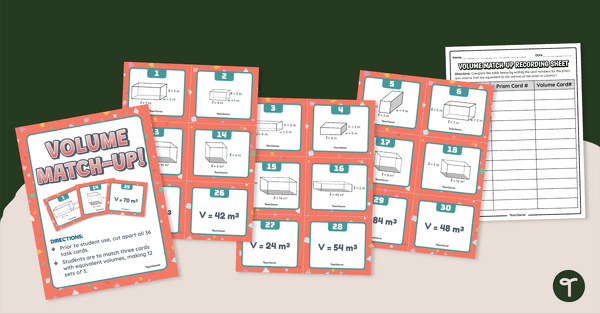
Volume Match-Up!
Find rectangular prisms with the same volume while completing this match-up activity.
- Plus Plan
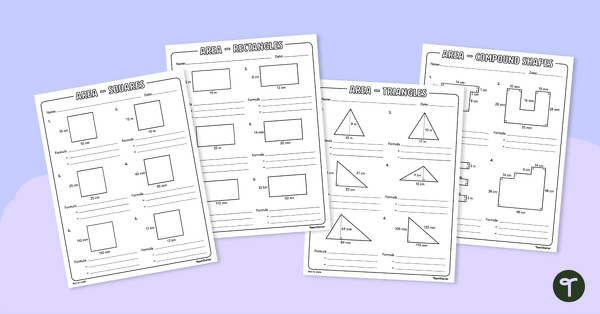
Area Worksheets
Practice finding the area of different shapes with this set of 4 worksheets.
- Plus Plan
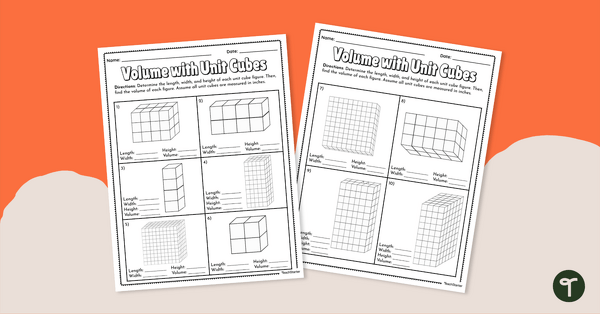
Volume with Unit Cubes – Worksheet
Use this worksheet to reinforce how to find the volume of a rectangular prism by counting the number of unit cubes.
- Plus Plan

Understanding Volume - Vocabulary Cards
Promote math vocabulary development with this set of 15 vocabulary cards focusing on volume.
- Plus Plan
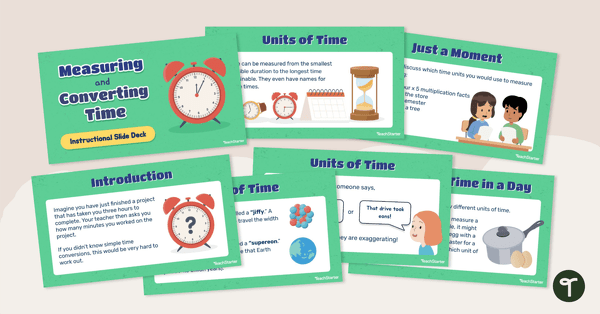
Measuring and Converting Time – Instructional Slide Deck
Learn how to measure and convert time with this 14-slide instructional slide deck.
- Plus Plan
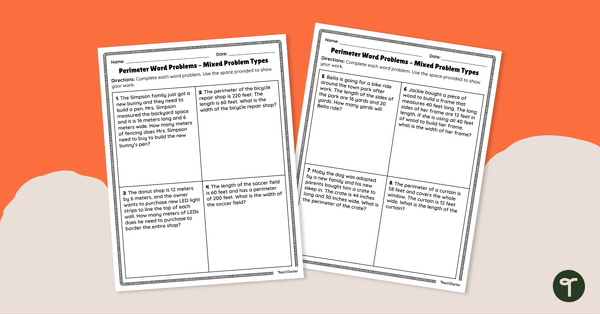
Mixed Perimeter Word Problems Worksheet
Use this perimeter word problems worksheet to give your students practice calculating the perimeter of shapes.
- Plus Plan
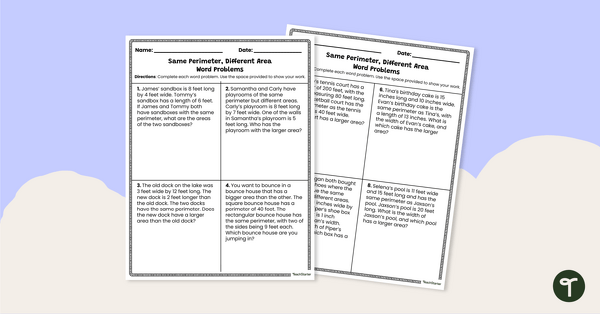
Same Perimeter, Different Area Word Problems – Worksheet
Practice solving multi-step word problems involving objects that have the same perimeter but different areas.
- Plus Plan
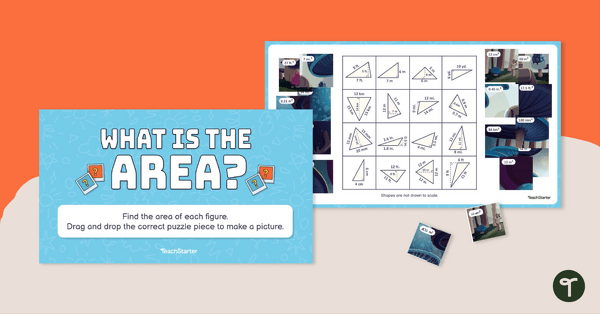
Interactive Area Puzzle (Triangles)
Set this task for students to find the area of 16 triangles on the board and match the corresponding pieces to reveal a mystery picture.
- Plus Plan
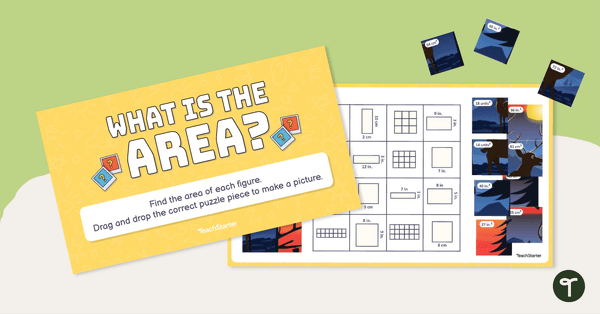
Interactive Area Puzzle (Squares and Rectangles)
Find the area of 16 shapes on the board and match the corresponding pieces to reveal a mystery picture.
- Plus Plan

Measuring to the Nearest 1/4 Inch – Match-Up Activity
Practice measuring objects to the nearest ¼ inch with this match-up activity.
- Plus Plan
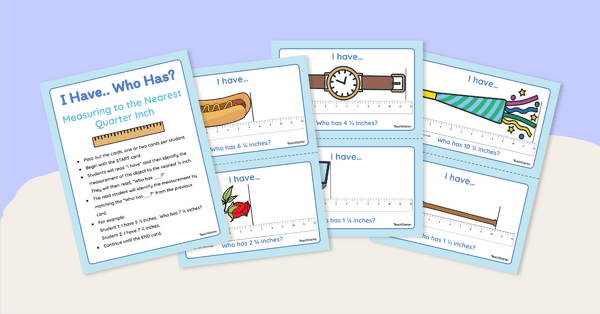
I Have, Who Has? – Measuring to the Nearest Quarter Inch
Practice measuring objects to the nearest ¼ inch while playing this whole-class game.
- Plus Plan
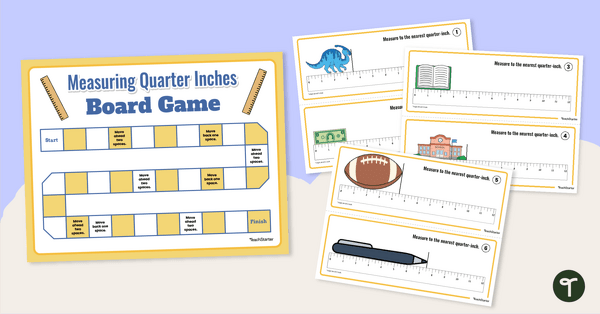
Measuring to the Nearest Quarter Inch Board Game
Build measurement skills with this board game which focuses on measuring to the ¼ inch mark on a ruler.
- Plus Plan
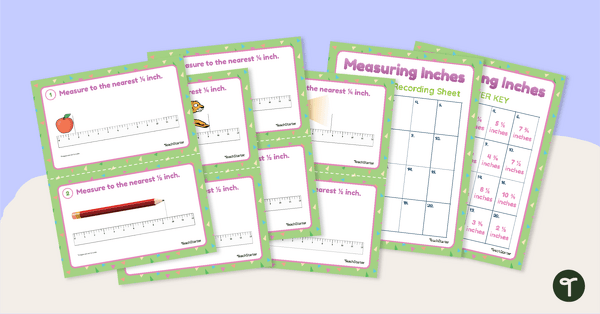
Measuring to the Nearest 1/2 and 1/4 Inch Task Cards
Measure items to the nearest ½ and ¼ inch with this set of 20 task cards.
- Plus Plan
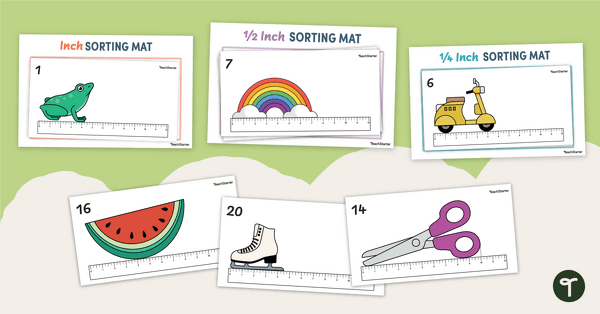
Nearest Inch, 1/4 Inch, 1/2 Inch Sorting Activity
Practice measuring to the nearest ¼ inch, ½ inch, and inch with this set of 20 sorting cards.
- Plus Plan
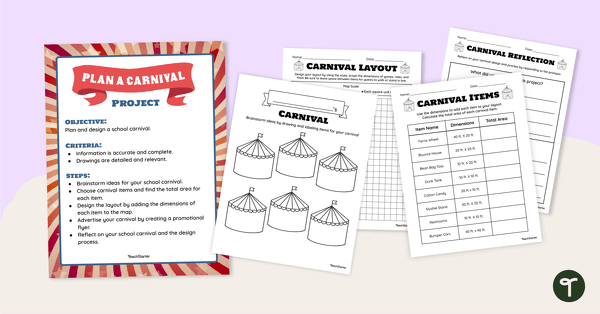
End of Year- Carnival Planning Project
Integrate STEM activities into your end-of-year lessons by inviting young entrepreneurs to plan, design, and advertise their own carnival!
- Plus Plan
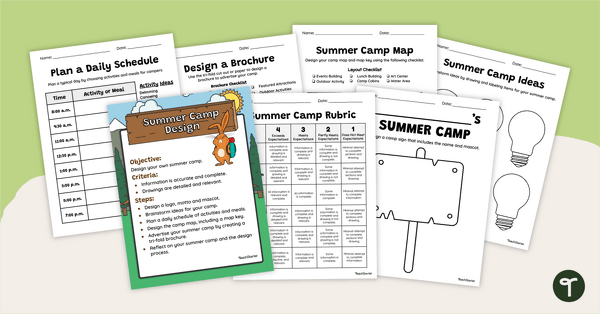
End of Year Project- Design a Summer Camp
Plan, design, and organize a Summer Camp Program with a fun end of year art and STEM project for elementary students.
- Plus Plan
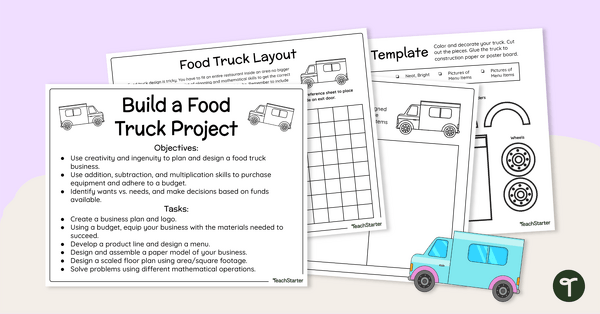
Design a Food Truck Math Project
Introduce your students to the world of Food Trucks as they master math, STEM, and art to design and run their own food truck.
- Plus Plan
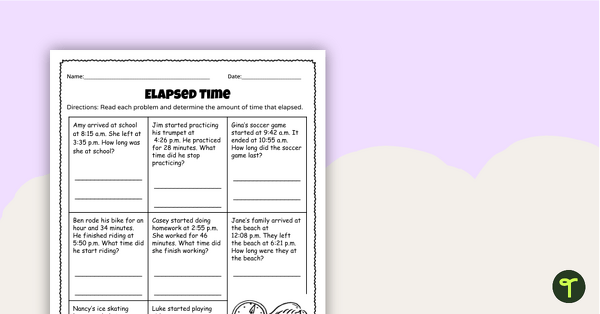
Elapsed Time Worksheet
Determine how much time has passed with this collection of elapsed time word problems.
- Plus Plan
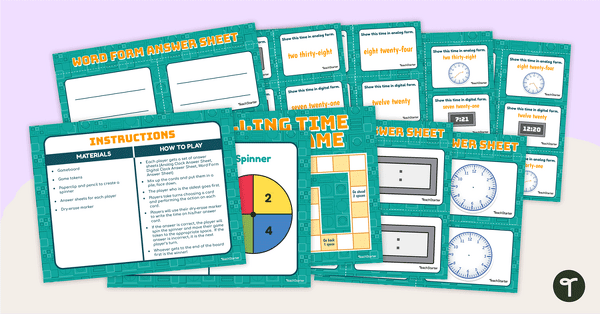
Telling Time Board Game
Practice representing time on analog clocks, digital clocks, and word form with this board game.
- Free Plan
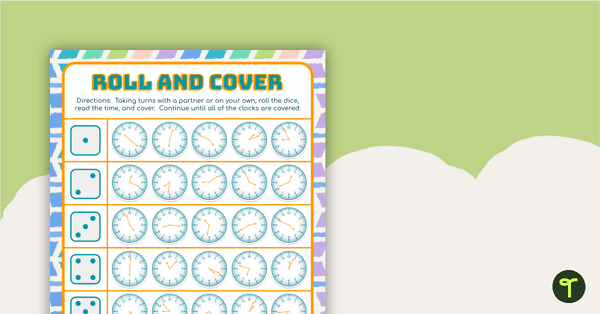
Roll and Cover – Telling Time to the Minute
Practice telling to the minute with this roll and cover game
- Plus Plan
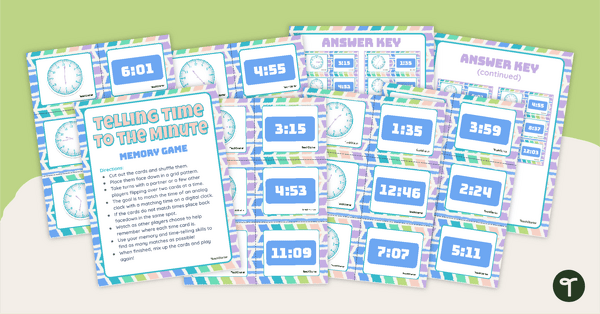
Telling Time to the Minute – Memory Game
Practice telling time to the minute with this set of 30 match-up cards.
- Plus Plan
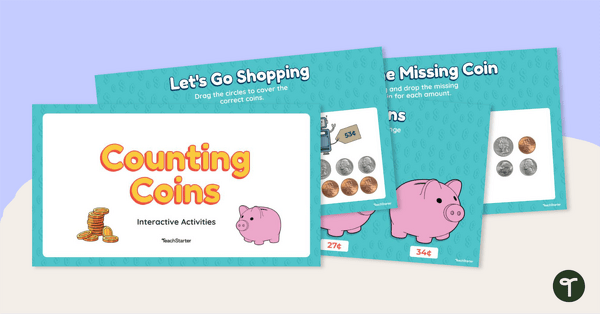
Counting Coins - Interactive Activities
Practice creating amounts up to a $1.00 with a variety of coins.
- Plus Plan
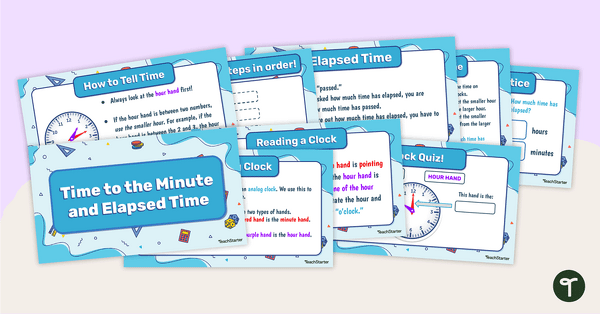
Time to the Minute and Elapsed Time – Teaching Presentation
Practice telling time to the nearest minute and calculating elapsed time with this 18-slide teaching presentation.
- Plus Plan
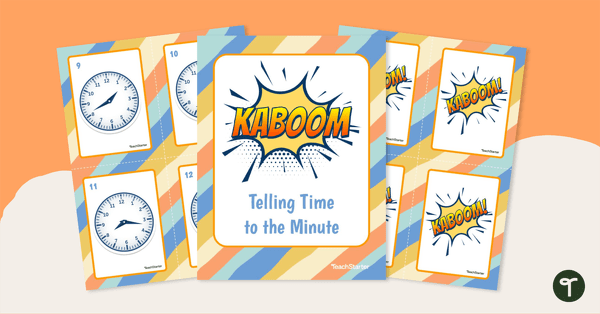
Time to the Minute – Kaboom Game
Practice reading analog clocks and telling time to the nearest minute with this engaging card game.
- Plus Plan
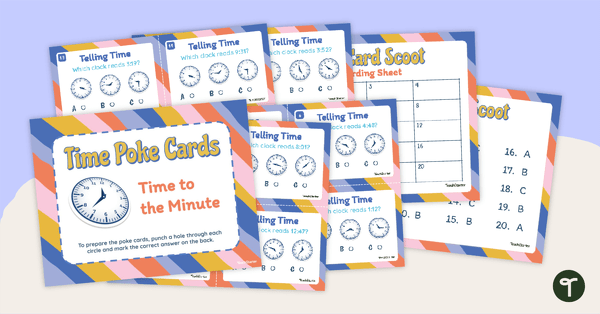
Time to the Minute Poke Cards
Practice reading analog clocks and telling time to the minute with this set of self-checking poke cards.
- Plus Plan
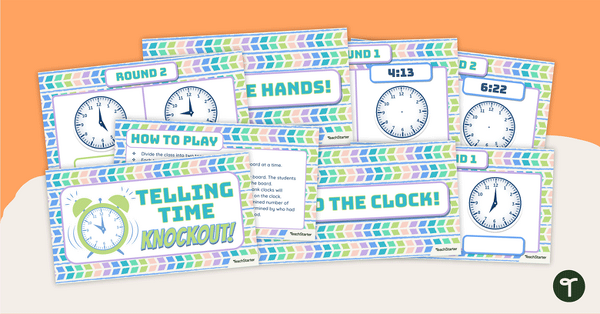
Telling Time Knockout
Practice telling time to the minute by reading analog and digital clocks with this competitive whole-class Telling Time Knockout game.
- Plus Plan
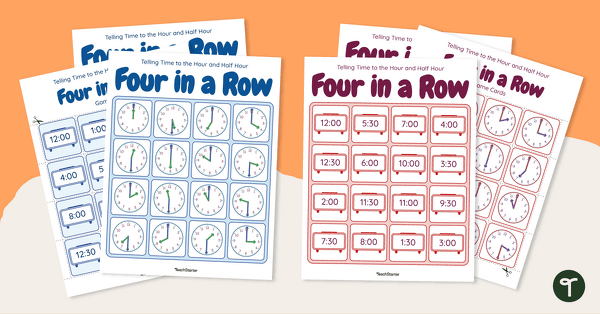
Four in a Row Game - Telling Time to the Hour and Half Hour
Students match analog and digital clock times on their game board to tell the time in 30 minute and hour increments.
- Plus Plan
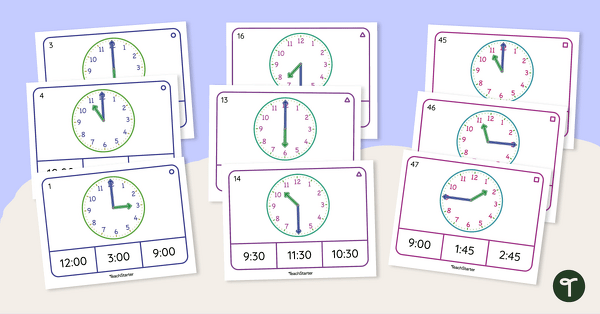
Telling Time Cards
Identify the time on the analog clock and use a clothespin to mark the correct digital time.
- Plus Plan
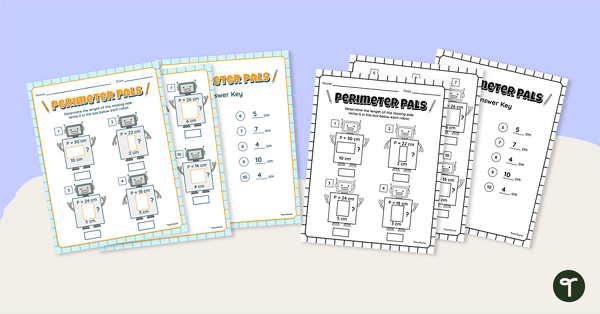
Find the Missing Side Worksheet
Use this missing side perimeter worksheet to help your students find the missing sides on a collection of rectangles and squares.
- Plus Plan
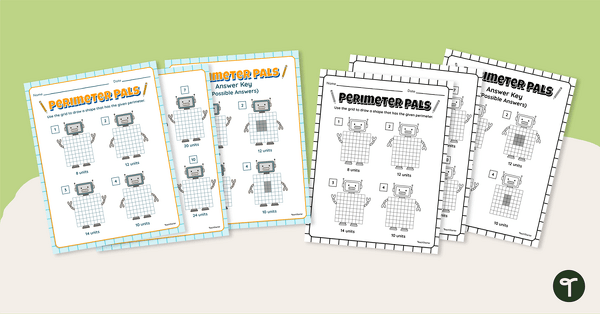
Draw the Perimeter Worksheet
Get students to draw a figure with a given perimeter with this perimeter of rectangles worksheet.
- Plus Plan
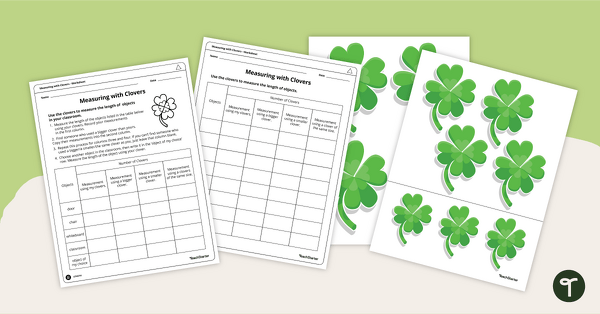
Measuring Length with Clover Worksheet
Measure familiar objects using our lucky clover in this St Patrick’s Day math activity!
- Plus Plan
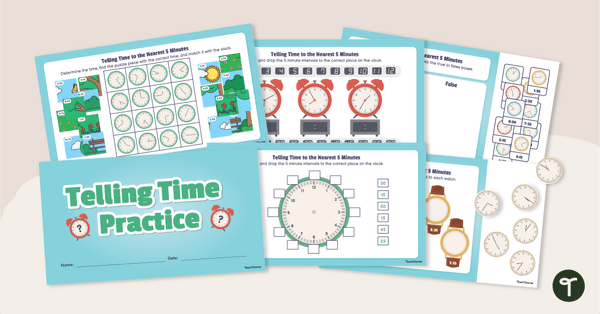
Telling Time to the Nearest Five Minutes - Interactive Activities
Read different clock faces to the nearest 5 minutes.
- Measurement Worksheets
- Measurement Games
- Measurement Posters
- Measurement Projects
- Measurement Templates
- Measurement for Pre-K
- Measurement for Kindergarten
- Measurement for 1st Grade
- Measurement for 2nd Grade
- Measurement for 3rd Grade
- Measurement for 4th Grade
- Measurement for 5th Grade
- Measurement for 6th Grade